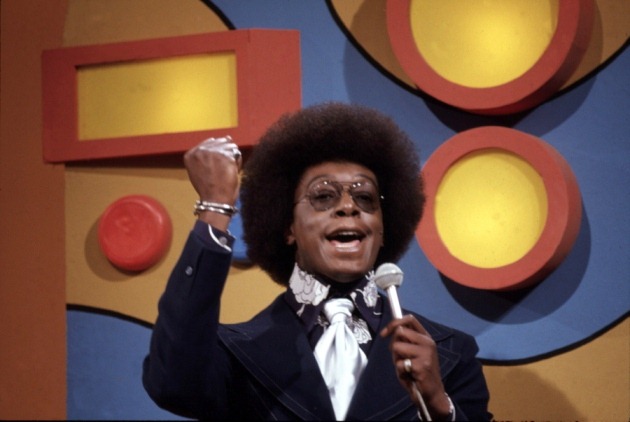Autopsy Results In For Two of TV’s Greatest Music Hosts

More details are now available about the deaths of music TV host legends Dick Clark and Don Cornelius.
The autopsy results from Soul Train creator Don Cornelius revealed that the 75-year-old died of a self-inflicted gunshot wound to the head this past February.
It also gave some insight at to why Cornelius may have decided to end his own life.
According to the report, Cornelius’s son told investigators:
The decedent Donald Cornelius had suffered an aneurysm about 15 years ago. Due to the aneurysm the decedent developed seizures. As time went on the decedent’s health continued to decline regardless of his medication. Within the past six months the decedent would have conversations with his son and stated that he didn’t know how much longer he could hang on. The decedent was very depressed about his failing health. On 02/01/2012, at about 0300 hours, the decedent telephoned his son and stated that, I don’t know how long I can take this. [I] told him that I’ll be right over. His father told him that the back door would be unlocked. When arrived at the location he found the back door unlocked and detected an odor of smoke. [He] then found his father seated in a chair with a pistol in his right hand.
What is a Brain Aneurysm?
A brain aneurysm (also known as a cerebral aneurysm) is a weak or thin spot on a blood vessel in the brain that balloons out and fills with blood. It is estimated that one in fifteen people in the US will develop an aneurysm during their lifetime.
The bulging aneurysm can put pressure on a nerve or surrounding brain tissue. It may also leak or rupture, spilling blood into the surrounding tissue (called a hemorrhage). Some cerebral aneurysms, particularly those that are very small, do not bleed or cause other problems. Cerebral aneurysms can occur anywhere in the brain, but most are located along a loop of arteries that run between the underside of the brain and the base of the skull.
Symptoms depend on what structure the aneurysm pushes on, but may include:
* Double vision
* Loss of vision
* Headaches
* Eye pain
* Neck pain
A sudden, severe headache (often described as “the worst headache of your life”) is one symptom that an aneurysm has ruptured.
Other symptoms of an aneurysm rupture may include:
* Confusion, lethargy, or sleepiness
* Eyelid drooping
* Headaches with nausea and/or vomiting
* Muscle weakness or difficulty moving any part of the body
* Numbness or decreased sensation in any part of the body
* Seizures
* Speech impairment
* Sudden onset of irritability, impulsiveness, or loss of temper control
* Vision changes (double vision, loss of vision)
Dick Clark died April 11th of a heart attack. He had a long history of coronary artery disease. Further information just released was that Clark had undergone a procedure called a TURP (transurethral resection of the prostate) just the day before his death.
He had the operation to relieve “acute urinary retention,” the inability to urinate, because of an enlarged prostate.
Although the procedure is considered a low risk one, any procedure can be stressful for a patient with heart disease.
What is a TURP?
Transurethral resection of the prostate (TURP) is surgery to remove all or part of the prostate gland, to treat an enlarged prostate. The most common reason the procedure is done is for benign prostatic hyperplasia (see below).
In TURP, the surgeon inserts a thin tube up the urethra and cuts away pieces of the prostate with a wire loop while looking through a cystoscope. TURP and open surgery both require general anesthesia and a stay in the hospital.
A TURP procedure is not the same as removing the prostate. Surgeons remove only enough tissue to relieve urine blockage. In a few cases, the prostate may continue to grow, and urinary problems return.
Benign Prostatic Hyperplasia (BPH).
The prostate is a walnut-sized gland that forms part of the male reproductive system. The gland is made of two lobes, located in front of the rectum and just below the bladder, where urine is stored. The prostate also surrounds the urethra, the canal through which urine passes out of the body.
It is common for the prostate gland to become enlarged as a man ages. Though the prostate continues to grow during most of a man’s life, the enlargement doesn’t usually cause problems until late in life. BPH rarely causes symptoms before age 40, but more than half of men in their sixties and as many as 90 percent in their seventies and eighties have some symptoms of BPH.
As the prostate enlarges, the layer of tissue surrounding it stops it from expanding, causing the gland to press against the urethra like a clamp on a garden hose. The bladder wall becomes thicker and irritable. The bladder begins to contract even when it contains small amounts of urine, causing more frequent urination. Eventually, the bladder weakens and loses the ability to empty itself, so some of the urine remains in the bladder. The narrowing of the urethra and partial emptying of the bladder cause many of the problems associated with BPH, which include:
- a hesitant, interrupted, weak stream
- urgency and leaking or dribbling
- more frequent urination, especially at night
Unfortunately, these symptoms are not specific for BPH. Prostate cancer and infections of the prostate can have the same symptoms, so it is important to seek the advice of a medical professional to determine which is the cause of the symptoms.
























0 comments